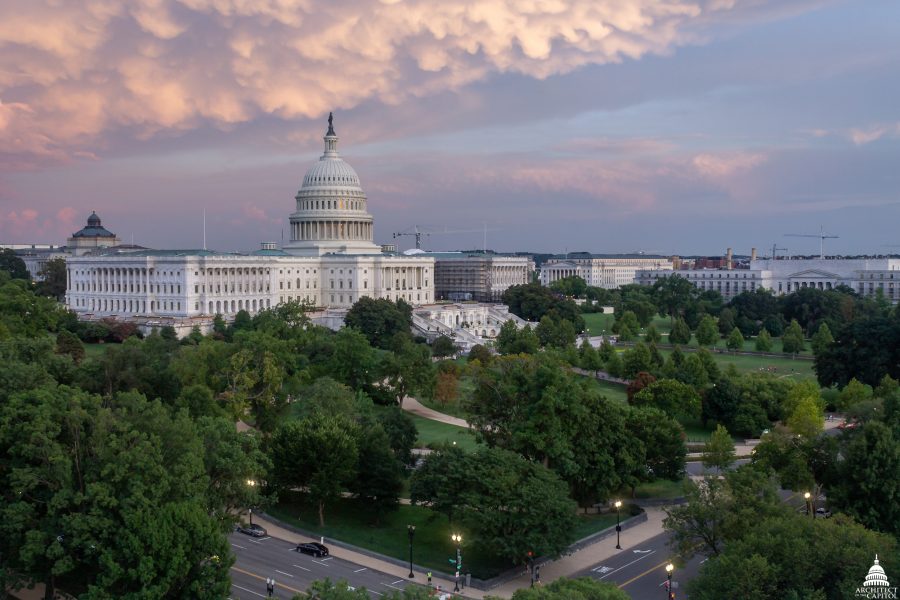After years of blocking the Air Force from retiring A-10 attack aircraft, the Senate Armed Services Committee will allow the service to proceed, but not with a new initiative to retire older F-22 Raptor air superiority jets. It also agreed to add seven more jets to USAF’s request for F-35 fighters, and overruled the service on its plan to trim the HH-60 Combat Search and Rescue Helicopter buy.
In its version of the 2023 National Defense Authorization Act, passed June 16, the SASC didn’t challenge USAF’s request to retire 21 A-10s from the Air National Guard and replace them with F-16s. The number is smaller than the Air Force has asked to trim in earlier years. The close air support airplane has enjoyed fierce support in Congress and lawmakers have frequently included provisions in the NDAA to prevent any A-10s from being retired.
The panel was not willing to let the Air Force take down its inventory of F-22s. The Air Force had wanted to retire the oldest 33 F-22s, which are used for training only. The service has said they are expensive to maintain and produce negative learning because they are of an older configuration of the Raptor, and that it’s too costly to bring them up to par. The Air Force wanted to use the savings to improve the remaining jets and invest in the replacement Next Generation Air Dominance system.
In its version of the NDAA, the SASC said no F-22s can be retired “until submission of a detailed written plan for training F-22 aircrew while avoiding any degradation in readiness or reduction in combat capability,” according to a committee news release.
All of the F-22s USAF had slated for retirement are assigned to Tyndall Air Force Base, Fla., which is represented by Sen. Rick Scott (R-Fla.), a member of the Senate Armed Services Committee. Tyndall was largely destroyed by Hurricane Michael in 2018 and those F-22s the Air Force wants to retain have been redistributed among other F-22 bases.
The Air Force only requested 33 F-35s in its fiscal 2023 budget submission, but in its unfunded priorities list, it noted seven more that got squeezed out. The Senate obliged by adding seven more F-35s to USAF’s ask, for a total of 40. That is still lower than USAF’s request for 48 per year in the last few years, raised in most of those years to 60 by Congress. The Air Force has said it prefers delaying purchases now to wait for the Block 4 model of the jet.
The committee also fulfilled the Air Force’s unfunded priority request of four extra EC-37B Compass Call aircraft, as well as its No. 1 request, of $579 million for additional weapon system sustainment money.
The Air Force had planned to reduce its buy of HH-60W Combat Search and Rescue Helicopters from 113 to 75, on the argument, voiced by Air Combat Command Chief Gen. Mark D. Kelly, that the aircraft can’t get to downed airmen behind the lines in Asia. USAF planned to halt the program with the 10 helicopters requested in the FY’23 budget, but the SASC doubled the planned buy to 20. It also included a provision requiring a briefing on “plans to satisfy the combat rescue requirement with United States assets should the Air Force’s program of record be truncated short of the inventory objective.”
That requirement mirrors one included in the House Armed Services tactical air and land forces subcommittee mark of the NDAA, which directs a “study on the requirements for the Air Force combat search and rescue mission to meet the objectives of the most recent National Defense Strategy and the development of an acquisition strategy to meet the requirements identified.”
The NDAA authorizes money and sets policies and priorities for the Pentagon. While the SASC conducted its markup of the 2023 bill behind closed doors and approved its version with a bipartisan 23-3 vote–with a summary released shortly thereafter–the House Armed Services Committee will have an open session to consider its version on June 22.
Space
As the Space Force continues to grow and develop, the SASC version of the NDAA includes several provisions addressing the service’s structure.
For one, the NDAA would allow the Secretary of the Air Force to vary end strength more than the other services in order to build up and establish the Space Force. For another, the bill would require a federally-funded research center to conduct a study on the Space Force’s proposal to combine its full-time and part-time Guardians into one hybrid Space Component.
The Senate also wants a report on the five-year cost of “the transfer and operations of the fleet of narrowband communications satellites from the Navy to the Space Force,” a process that has already begun.
The bill would also direct the Secretary of Defense to make a recommendation as to whether the Space Development Agency should be exempted from the Joint Capabilities Integration and Development System. SDA, which is scheduled to transition into the Space Force in the coming months, was established to accelerate innovation, acquire commercial technologies, and generally move quicker than more traditional Pentagon organizations. JCIDS, meanwhile, is tasked with documenting, reviewing, and validating capability requirements for programs across DOD, but for years now, critics have faulted it for being too slow and cumbersome.
Finally, the SASC version of the NDAA would designate the Chief of Space Operations as the “force design architect” for space systems of the Armed Forces.
